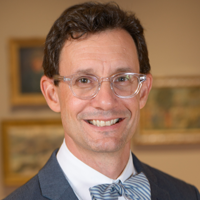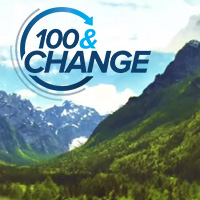As a judge for the 100&Change competition, I was truly inspired by the capacity of teams from across the globe to think big. Really big. The MacArthur Foundation’s wildly open approach to considering any team and any idea—the bigger, bolder, and more radical the better—with an investment of $100 million on the line, surfaced brilliant ideas, some from unexpected places. Perhaps more importantly, the competition served as the impetus for new teams and partnerships to form and for existing teams to reach further and reimagine how an idea can scale and be transformative. That, at least, was the impact 100&Change had at Arizona State University (ASU).
It began with an email. In June 2016, President Michael Crow sent the 100&Change announcement to ASU’s deans and directors. It read: “This is what we do.” So we did.
Over 70 ASU faculty, staff, and students packed the room for a kickoff meeting opened by President Crow, led by ASU Foundation CEO Rick Shangraw and facilitated by Vice President of Research Development Elizabeth Cantwell. Leaders spelled out the intent, the rules, and the process for developing a proposal. As word spread after the meeting, interested people viewed the recorded session several more times. We brought in grant writers and consultants to develop our ideas and mature our teams. Networks were tapped. Meetings were held. The writing began in earnest.
In October, we submitted 14 impassioned, globally focused proposals. Taken together, these proposals represented 175 individuals working for several months in concert with 40 organizations to describe their ideas to change the world. Ultimately, their efforts demonstrated both the breadth and depth of ASU’s commitment to its design aspirations—fusing intellectual disciplines and engaging people across the globe to transform society.
Though none of our teams are semi-finalists, we did have three groups score in the Top 200.
Expanding the Sustainability Consortium Index to Promote Conservation in the Supply Chain
Changing the Trajectory of Rice-based Cultures Towards Sustainability
Revolutionizing public health management, using data-driven decision-making, informed by near- real-time population health monitoring
More importantly, 100&Change spurred a number of creative, thoughtful, potent ideas that found new life in other funding forums.
Before submitting, we pitched four to our own Idea Enterprise™, which brings together a group of highly successful senior business leaders to evaluate and advance our most promising ideas. Feedback included how to better pitch our ideas to potential investors and prove our projects in Phoenix before taking them on a global tour.
This experience taught us the value of clearly communicating our ideas. As no doubt many other 100&Change applicants learned, an idea truly capable of changing the world should be easily understood by all.
Other teams parlayed the proposals submitted to MacArthur into broader, more research-focused programs and presented them before peers at a discussion forum for the National Science Foundation’s (NSF) 2018 Science and Technology Center (STC). The STC program supports innovative, transformative interdisciplinary research and education projects requiring large-scale, long-term awards. The purpose of our forum was to coalesce our big ideas and teams in advance of the solicitation and to help us be prepared to pitch these ideas to the NSF.
In addition to these more formal events, our Knowledge Enterprise Development office has played a crucial role in helping us identify and apply for federal and philanthropic funding opportunities. We’ve been able to work within and across teams to focus on the more meaningful features of the proposals and turn them into on-the-ground projects.
We expect this to continue through the coming years, as we’re considering running a similar “change the world” competition every other year. After all, it’s what we do.
Note: Tepper did not evaluate any ASU proposals. Read more about how we addressed potential conflicts of interest to help ensure a level playing field.




